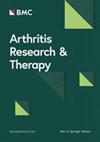Predicting autoimmune thyroiditis in primary Sjogren’s syndrome patients using a random forest classifier: a retrospective study
IF 4.9
2区 医学
Q1 Medicine
引用次数: 0
Abstract
Primary Sjogren’s syndrome (pSS) and autoimmune thyroiditis (AIT) share overlapping genetic and immunological profiles. This retrospective study evaluates the efficacy of machine learning algorithms, with a focus on the Random Forest Classifier, to predict the presence of thyroid-specific autoantibodies (TPOAb and TgAb) in pSS patients. A total of 96 patients with pSS were included in the retrospective study. All participants underwent a complete clinical and laboratory evaluation. All participants underwent thyroid function tests, including TPOAb and TgAb, and were accordingly divided into positive and negative thyroid autoantibody groups. Four machine learning algorithms were then used to analyze the risk factors affecting patients with pSS with positive and negative for thyroid autoantibodies. The results indicated that the Random Forest Classifier algorithm (AUC = 0.755) outperformed the other three machine learning algorithms. The random forest classifier indicated Age, IgG, C4 and dry mouth were the main factors influencing the prediction of positive thyroid autoantibodies in pSS patients. It is feasible to predict AIT in pSS using machine learning algorithms. Analyzing clinical and laboratory data from 96 pSS patients, the Random Forest model demonstrated superior performance (AUC = 0.755), identifying age, IgG levels, complement component 4 (C4), and absence of dry mouth as primary predictors. This approach offers a promising tool for early identification and management of AIT in pSS patients. This retrospective study was approved and monitored by the Ethics Committee of The Third Affiliated Hospital of Sun Yat-sen University (No.II2023-254-02).使用随机森林分类器预测原发性干燥综合征患者自身免疫性甲状腺炎:一项回顾性研究
原发性干燥综合征(pSS)和自身免疫性甲状腺炎(AIT)具有重叠的遗传和免疫谱。这项回顾性研究评估了机器学习算法的有效性,重点是随机森林分类器,以预测pSS患者中甲状腺特异性自身抗体(TPOAb和TgAb)的存在。回顾性研究共纳入96例pSS患者。所有参与者都进行了完整的临床和实验室评估。所有参与者都进行了甲状腺功能测试,包括TPOAb和TgAb,并相应地分为甲状腺自身抗体阳性和阴性组。然后使用四种机器学习算法分析影响甲状腺自身抗体阳性和阴性pSS患者的危险因素。结果表明,随机森林分类器算法(AUC = 0.755)优于其他三种机器学习算法。随机森林分类器显示,年龄、IgG、C4和口干是影响预测pSS患者甲状腺自身抗体阳性的主要因素。利用机器学习算法预测pSS中的AIT是可行的。通过分析96例pSS患者的临床和实验室数据,随机森林模型显示出优越的性能(AUC = 0.755),确定年龄、IgG水平、补体成分4 (C4)和不存在口干作为主要预测因素。该方法为pSS患者AIT的早期识别和管理提供了一个有前途的工具。本回顾性研究经中山大学第三附属医院伦理委员会(No.II2023-254-02)批准并监测。
本文章由计算机程序翻译,如有差异,请以英文原文为准。
求助全文
约1分钟内获得全文
求助全文
来源期刊

Arthritis Research & Therapy
RHEUMATOLOGY-
CiteScore
8.60
自引率
2.00%
发文量
261
审稿时长
14 weeks
期刊介绍:
Established in 1999, Arthritis Research and Therapy is an international, open access, peer-reviewed journal, publishing original articles in the area of musculoskeletal research and therapy as well as, reviews, commentaries and reports. A major focus of the journal is on the immunologic processes leading to inflammation, damage and repair as they relate to autoimmune rheumatic and musculoskeletal conditions, and which inform the translation of this knowledge into advances in clinical care. Original basic, translational and clinical research is considered for publication along with results of early and late phase therapeutic trials, especially as they pertain to the underpinning science that informs clinical observations in interventional studies.
 求助内容:
求助内容: 应助结果提醒方式:
应助结果提醒方式:


